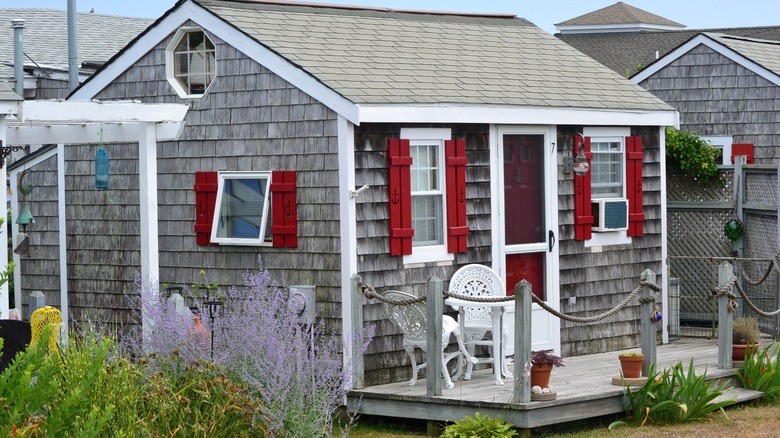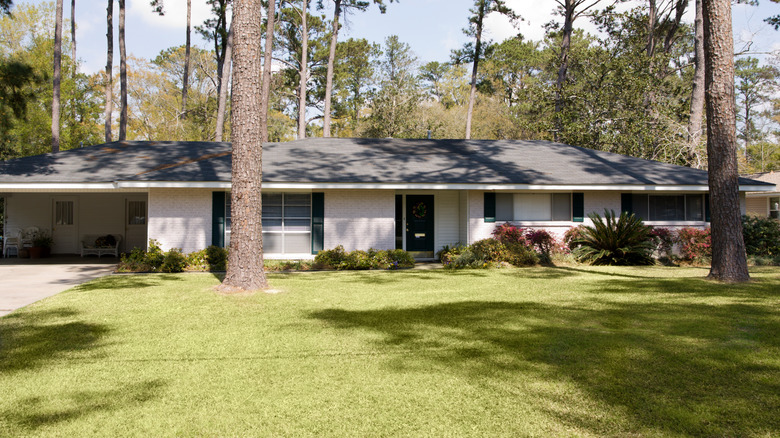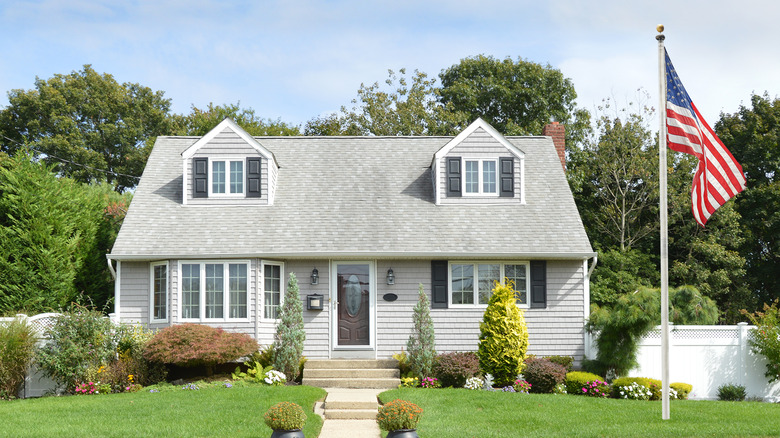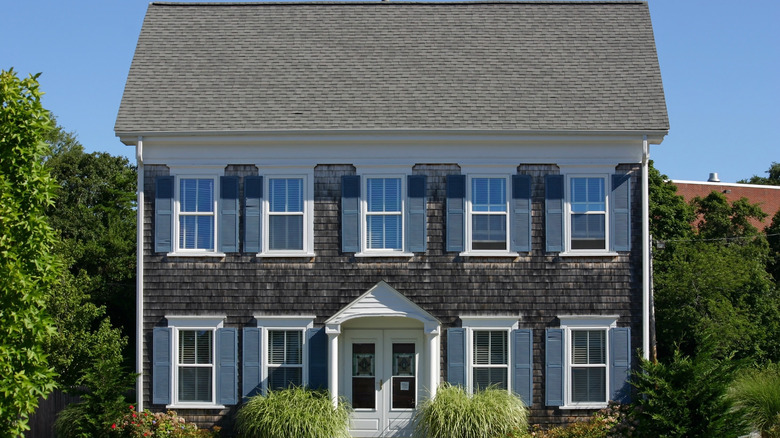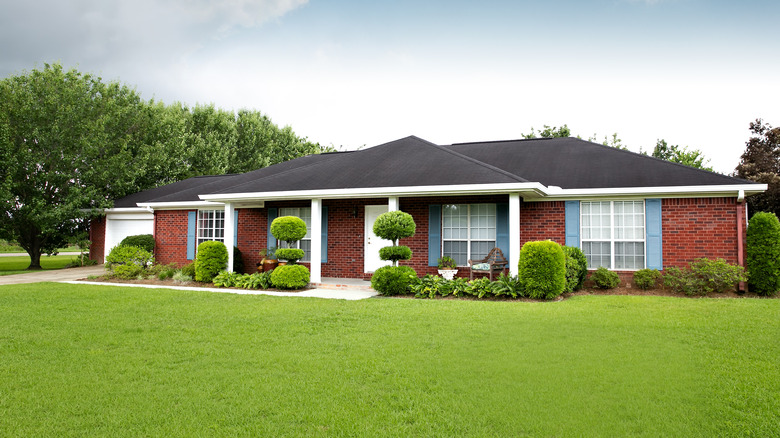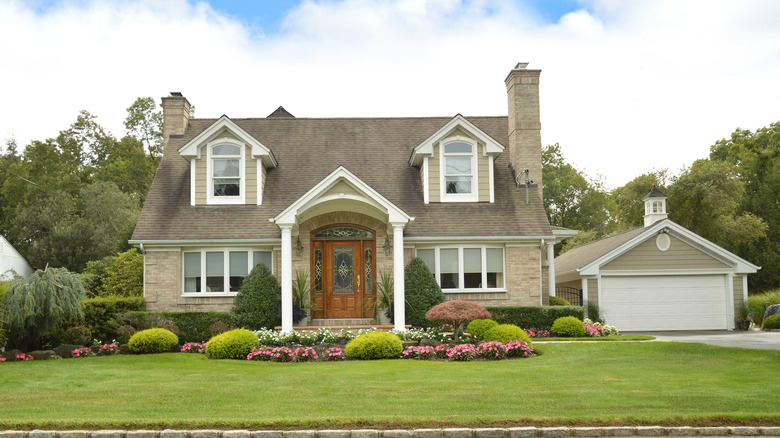Ranch-Style Vs. Cape Cod-Style Homes: What's The Difference?
Many Americans are ditching traditional multi-level homes for more compact, single-level homes. According to the National Association of Home Builders, 64% of buyers prefer a single-story home. These dwellings provide energy efficiency as well as convenience for older residents and those who need wheelchair access. They also have some of the best structures for open-concept layouts.
When building or buying a single-level home there many variables to consider, like style, façade, and functionality. Two of the most popular alternatives to multi-level homes are ranch and Cape Cod-style houses. Ranch-style residences feature modern designs with a single-story floor plan, whereas Cape Cod homes are more traditional and feature 1.5 floors. Both offer the benefits of having a living space centered on a single floor, but vary in appearance and layout. Below we'll discuss the differences between the two, as well as the advantages and disadvantages so that you can decide which style works best for you.
What do ranch-style homes look like?
In terms of appearance, there are a few key differences between Cape Cod and ranch-style homes. As noted before, ranches are single-story homes originating in Southern California in the 1930s and 40s. They are associated with the mid-century modern style. Ranch homes often feature an open concept layout since the single-story makes fewer walls necessary to hold the structure together. They are often rectangular or U-shaped with large windows to the front and sliding door to the back that opens up to a patio. Many ranches include an attached garage. They are great for their connectivity to the outdoors. Sometimes, ranches feature a lower level that connects to the outdoors if they're built on an uneven plot of land. These are known as raised ranches, per Bergen County Homes.
The low-to-the-ground, open layout, along with large windows and outdoor access, give ranch-style homes a laidback feel. They are simply designed with more modern aesthetics, which can be a big draw for many homebuyers. They can be found across the country, but are most common in states like California and Texas and less common in the northeast, according to Rocket Homes.
What do Cape Cod-style homes look like?
Cape Cod-style homes were among the most popular in the early development of the northeastern U.S. throughout the 1700s and 1800s, but have experienced a recent resurgence. They are not traditional multi-level or single-level homes — instead, they usually feature a first floor that contains most of the living space with a staircase that leads up to either an attic or bedroom. The 1.5-story layout means that the home has some benefits of both single and multi-level homes.
Distinguishing features of Cape Cod-style homes are steep roofs, symmetrical facades, a central front door, central living room, and chimney. They tend to be more compact than ranch homes, so they can work on smaller plots of land. They also have a colonial aesthetic when compared to the modern ranch-style. Cape Cods are most commonly found in Massachusetts and other parts of New England, according to Homes & Gardens, but can now be found in any region of the U.S.
Cape Cod vs. ranch: Which is more expensive?
When looking at price, the value of any home is going to be heavily dependent on the location, plot of land, year built, renovations, and a variety of other factors — though it is possible to find expensive or cheap homes of either style. That being said, ranches typically cost more than Cape Cods per square foot, per Craftsman Custom Homebuilders. This is because ranch-style homes require the same amount of roofing for less living space. Another factor is the land needed to build the ranch vs. the Cape Cod; ranch-style homes can require larger plots of land to get the same amount of living space, since they are built outwards rather than upwards.
Though ranches will typically cost more per square foot in the same area, it may be easier to find affordable ranch homes because of their location. Even though prices have risen across the country — especially in some areas of California — real estate in most areas of the southwest is still generally more affordable than in the northeast.
Pros and cons of ranch-style homes
The main advantage of having a ranch-style home is the convenience of having everything on one floor. As noted before, this can be a huge selling point for seniors, families with small children, or people who need wheelchair access. It also makes moving simple; couches, beds, and mattresses do not need to be carried up multiple levels.
Ranch homes are also more energy efficient (via Lehigh Valley Live), as temperature control requires less energy for a single-story home. This is why they are great options for those in the southwest United States that require year-round air conditioning. They feature gable roofs that are typically low-lying, which can be advantageous when doing roof work or clearing gutters.
Unfortunately, ranch homes can lack privacy, as noted by Madison Home Builders. Many homeowners feel like ranches do not allow for enough privacy because the bedrooms, bathrooms, kitchen, and living room are all on the same floor. Some ranches feature basements that contain additional bedrooms, which may solve this problem.
Pros and cons of Cape Cod homes
Cape Cod homes were originally designed to face cold New England winters. Their compact design helps them to retain heat, while their sloped roofs makes snow removal easier, as noted by Rocket Homes. The compact structure is also nice for those working with smaller plots of land, helping to fit in all the necessary amenities while maintaining room for outdoor space.
Since they usually have 1.5 stories, Cape Cods have some benefits of both single and multi-level homes. For example, upstairs bedrooms can provide the privacy and security of a multi-level home, but having additional downstairs bedrooms and a majority of living space on the first floor makes the homes accessible for people with all levels of mobility. Cape Cod homes also tend to be more affordable, so they're a great option for people buying their first home.
A disadvantage is that Cape Cods tend to be relatively small. As previously mentioned, they have a compact design. While this has its perks, it can also mean smaller rooms and low ceilings.
